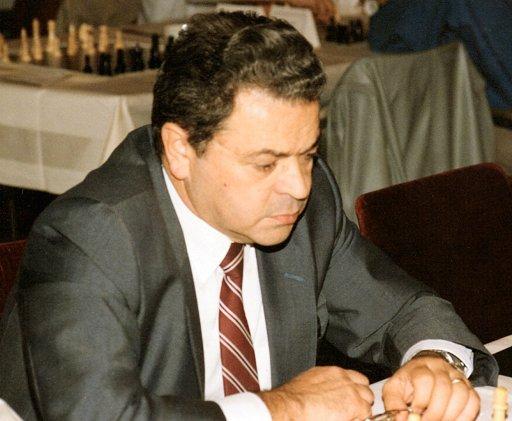
The Wildest Game
Recently, a friend sent me a fantastically crazy game, and I have decided to share it in my column. It was a fairly obscure game, from the Beverwijk tournament of 1961. The position that arose was so incredibly lopsided that it is hard to believe. Huge swings of material occurred, as the players fought tooth and nail for the initiative, with Black having the last say - White's attack broke through and won the queen, but the black king escaped, fled to the kingside, and then his own attack commenced. We will look at the game in stages.
The game was an unusual variation of the King's Indian. Why does this opening produce so many wild, rich, and unusual games? I think there are several answers. First of all, unlike some tamer openings, most of the pieces remain on the board for a long time. Second, the nature of the first few moves is towards imbalance - White has three pawns in the center, while Black is busy fianchettoing his bishop. Inevitably Black hits back in the center, resulting in either a fairly blocked center where the battle moves to the wings, or an open center with hand-to-hand fighting.
But I think it is more than just these factors. There is also the element of theory and the lack of forcing variations. While there is a fair amount of theory in the King's Indian, the absence of clear forcing variations and the complexity of the play means that there tend to be many possible moves for the players in most junctions in the game. Even in the most theoretical lines of the Mar Del Plata variation (where theory can extend to move 25 and beyond) there are still not many lines that actually result in some kind of simplified endgame.
Here the position is very non-standard. Black hit back in the center with ...c5, making the structure typical of the Benoni. However, Black has castled queenside, which is highly unusual and risky in this structure. White has a clear attacking plan on the queenside (a2-a3 and b2-b4), as well as an excess of space in the center (pawns on d5 and e5). However Black is not sitting still. He has grabbed White's dark-squared bishop, a major accomplishment in this structure. In the meantime, he has weakened the white king's position, making it vulnerable to ...h5-h4, as well as potential checks on the a7-g1 diagonal.
The competing attacks have reached an extreme point. The white attack looks more "visual" with immediate contact being made with the black king. But in fact somehow Black's attack, although slower, has more power - largely due to the unopposed dark squared bishop. White soon realized he could not actually catch the black king, which fled to the kingside, so checkmating the queen would have to do.
On the first glance at this game, it was scarcely believable. First the gigantic attack on the black queenside, the fleeing black king, and now the queen trapped. But soon you see the power of Black's slightly slower attack. Let's stop and look at this position:
Somehow the King's Indian has a propensity for generating positions that look like the pieces were just dropped on the board out of a bag, randomly. You can see another such one in a game I played, in the article "Chess and the Moon". That game was nowhere near the level of this one, but it matches it for sheer randomness of the position.
The black queen is well trapped, and giving it up for two pieces by the cowardly 29...Bxc3 30.Rxa5 Bxa5 is not an option - Black's attack will be gone, his pieces disorganized, and he will be facing the dangerous d5 and c5 pawns. So the queen is instead sold off for one tempo, to push a pawn. A position results with White up an entire queen and facing the relatively slow progression of the black kingside pawns.
By pure luck material is now exactly equal. But it is now Black who has a decisive attack.
This game is totally obscure and practically unknown. Looking for information about the game or the players online, I could find very little. It was played in Beverwijk 1961. Joaquim Durao is an Portugese international master who was champion of his country thirteen times. About his opponent, I have no information, although in his games in the database against Durao he scored a respectable 1.5-2.5, so he was probably a reasonable international-level player.
This unknown game is one of the most chaotic and fantastic I have seen on the chessboard. This is why I chose to share it with you. Certainly it fits into the subject of "Attack and Defense!"






